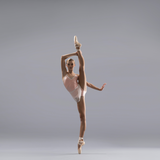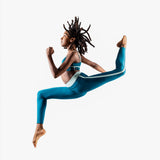Imagine it was your first day of learning to play the piano. You walk through the door and there is your teacher who you had read about online. She began playing piano at the age of 3, attended arts schools for both high school and college, and now plays in a local symphony. She is sitting behind the piano and playing Beethoven as though it were effortless. You sit down at the piano and ask her to teach you to play like that. She gives you some scales to practice. “No,” you say “I want to play like that, I don’t want to do simple scales!”
This example sounds silly, but I encounter this mindset daily from many yoga students. At least in my experience, it is common for yoga students to try to force themselves into postures that require many years of patience and practice. I see many students force themselves into stretches, and kick up into headstands and handstands, sometimes even during their very first yoga class. Sometimes even when I am calling out from the side of the room “please don’t take headstand!”. If you are an artist of any kind, you know that doing something crazy and extreme is not necessarily “advanced.” In my opinion, at least as a dancer, “advanced” means quality. It means you have taken the time to focus on the fundamentals, and continue to focus on them throughout your life and career as an artist.
To learn to play the piano, you probably wouldn’t go to your first lesson and get frustrated that you couldn’t effortlessly play Beethoven. If you tried, it wouldn’t sound better if you forced one note at a time, but refused to focus on your scales and arpeggios. Artists know this. For the purpose of this article, I will refer to dancers only, because I am specifically speaking about yoga movements and postures, but artists know what quality means (other types of movers know this as well, but let’s focus on the dancers!) Dancers spend their lives striving for quality. Dancers know that the focus on the fundamentals is what leads to effortlessness and beauty. They know that the focus on quality means focus on the journey, and not the destination.
In yoga, I often find that many of my students are interested in “getting” a posture, “getting” a bind, handstand, arm balance, or stretch. But, I also find that many students have little interest in thinking about how they are moving. This is not to say that these students don’t care about what they are doing, but it takes time to learn that the quality of movement, the “how,” not followed by an adjective, allows us to take our focus off of the endpoint and focus on the present moment. How the leg is moving rather than how high the leg is going. How you fold forward, not how low you fold. Dancers have spent their lives learning this concept, every day. In no way do I mean anything negative toward non-dancers who practice yoga. We all are in the perfect place on our own paths for growth and understanding. I just mean to draw attention to something very special that dancers might already know that non-dancers might learn a bit later on in their practice. I am sure there are many other types of ideas that we as dancers learn much later than non-dancers in our yoga practice! Luckily, yoga isn’t a race.
As a yoga teacher, I try not to focus on how a movement looks when I’m teaching. Of course, I want my students to be safe, but I try to focus on how the student’s movement feels in their own body. The reason the idea of quality is important to me as a teacher is because approaching anything with quality in mind teaches patience and humility. Dancers know that most things don’t happen in one day, but rather with years and hours of practice. When I see students forcing themselves into stretches, forcing their arms into binds, kicking up into banana-backed handstands, I am not worried that these postures “look bad.” In the yoga practice, there is little focus on doing a posture the “right way,” and it is also a practice that teaches non-attachment. The yoga postures are merely tools for observation that allow us to observe our own habits and patterns. That being said, focusing on quality takes the focus off of the endpoint of the posture, and redirects focus onto how one is moving in this very moment. With this approach, we can more easily practice non-attachment to postures, presence, patience, and humility. With focus on quality, we can understand that focus on the fundamentals builds the tools to move our bodies more mindfully. By focusing on quality, we can stop comparing ourselves to our neighbor, because we are no longer attached to a given endpoint.
If you are a dancer who practices yoga, know that you are a shining beacon of light for others practicing with you. Not because of your beautiful lines, but because the quality of movement you have been trained to focus on for so many years has impact beyond your physical movements. This focus on quality gives you the tools to practice non-attachment, being present, patience, and humility.
What would it be like to tune into these spiritual attributes during your dance classes? Let me know in the comments!
Photo Credit: @pointebrush



